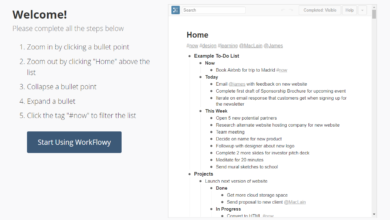OpenCart vs Shopify: A Comprehensive Comparison for 2024

Introduction
Choosing the right e-commerce platform is crucial for any online business. With numerous options available, the decision can be overwhelming. OpenCart and Shopify are two popular choices, each with unique strengths and features. This guide aims to provide a comprehensive comparison to help you decide which platform is best suited for your business needs.
1. Overview of OpenCart and Shopify
1.1 What is OpenCart?
OpenCart is an open-source e-commerce platform known for its flexibility and ease of use. Launched in 2008, it has grown into a robust solution for businesses of various sizes. OpenCart’s open-source nature allows for extensive customization, making it a favorite among developers who want to tailor the platform to their specific needs. It offers a range of built-in features such as product management, multiple store support, and a user-friendly admin interface. With thousands of extensions available, OpenCart can be expanded to include additional functionalities as required.
However, the flexibility of OpenCart comes with a learning curve. New users might find the initial setup and configuration challenging, especially if they lack technical expertise. Despite this, OpenCart is praised for its scalability and the control it offers over the design and functionality of an online store. For businesses with specific requirements or those looking for a cost-effective solution, OpenCart presents a compelling option.
1.2 What is Shopify?
Shopify, launched in 2006, is a cloud-based e-commerce platform that offers a straightforward approach to online selling. It is renowned for its ease of use and quick setup, making it an ideal choice for entrepreneurs and small businesses. Shopify’s user-friendly interface allows users to create and manage their online store with minimal technical knowledge. The platform provides a range of professional themes, integrated payment gateways, and powerful tools for inventory management and marketing.
Shopify’s success is largely attributed to its comprehensive customer support and reliable performance. With a wide range of built-in features and an extensive app store, Shopify caters to businesses of all sizes, offering solutions for various needs from marketing to sales analytics. Although Shopify operates on a subscription model with additional costs for premium features, it provides a seamless and efficient experience for managing an online store.
2. Key Comparison Factors
2.1 Ease of Use
When it comes to ease of use, Shopify takes the lead with its intuitive design and straightforward setup process. Users can quickly get their store up and running with minimal effort. The platform’s drag-and-drop interface allows for easy customization, and its streamlined dashboard simplifies managing products, orders, and customer data. Shopify’s support team is also available 24/7, offering assistance via live chat, email, and phone, which adds to the user-friendly experience.
In contrast, OpenCart, while flexible, has a steeper learning curve. The platform requires users to have some technical knowledge, particularly when it comes to installation and customization. Although OpenCart offers extensive documentation and community support, new users might find the initial setup process more complex. The admin interface is functional but may not be as polished or intuitive as Shopify’s, potentially requiring additional time to master.
2.2 Cost and Pricing
Cost is a significant factor in choosing an e-commerce platform. Shopify operates on a subscription model with various pricing tiers to suit different business needs. Plans start at a basic level with essential features and scale up to more advanced options with additional functionalities. While the upfront costs are predictable, businesses may incur additional expenses for premium themes, apps, and transaction fees.
OpenCart, being an open-source platform, has no upfront cost, making it a more budget-friendly option initially. However, users may need to invest in hosting, security, and potentially premium extensions to achieve the desired functionality. Although OpenCart’s base cost is lower, the total cost of ownership can vary depending on the additional features and customizations required.
2.3 Design and Customization
Both OpenCart and Shopify offer a range of design and customization options, but their approaches differ. Shopify provides a selection of professionally designed themes that are easy to customize using its built-in tools. Users can modify layouts, colors, and fonts without needing extensive coding knowledge. The platform also supports third-party apps that can enhance design and functionality, although some advanced customizations may require technical expertise.
OpenCart offers greater flexibility in design due to its open-source nature. Users can access and modify the source code to create a highly customized store. This level of control is ideal for businesses with specific design requirements or those looking for unique functionalities. However, achieving these customizations may require a developer’s assistance, making it less accessible for those without technical skills.
2.4 Features and Functionality
In terms of features, both platforms have their strengths. Shopify excels with its all-in-one approach, offering built-in features like inventory management, marketing tools, and analytics. Its integration with various payment gateways and shipping options streamlines the e-commerce process. Shopify’s app store provides additional functionalities, allowing businesses to enhance their store with various third-party integrations.
OpenCart also boasts a wide range of features, including multi-store support, advanced product management, and numerous extensions for added functionality. The platform’s open-source nature means users can customize features according to their needs. However, while OpenCart provides robust features out-of-the-box, achieving the same level of integration and ease of use as Shopify may require additional setup and customization.
2.5 Scalability and Performance
Scalability and performance are critical considerations for growing businesses. Shopify’s cloud-based infrastructure ensures reliable performance and scalability, handling high traffic and large inventories without significant issues. The platform automatically scales resources based on demand, allowing businesses to focus on growth without worrying about server maintenance or performance.
OpenCart’s scalability depends largely on the hosting environment and configuration. While it can handle large inventories and traffic, performance optimization may require manual adjustments and technical expertise. Businesses using OpenCart should ensure they have a robust hosting solution and be prepared to manage performance issues as they scale.
2.6 Support and Community
Support and community resources play a crucial role in the overall experience with an e-commerce platform. Shopify is known for its excellent customer support, offering 24/7 assistance through multiple channels. Its extensive documentation, tutorials, and community forums also provide valuable resources for users.
OpenCart, while supported by a vibrant community and extensive documentation, may not offer the same level of direct support as Shopify. Users often rely on community forums and third-party developers for assistance, which can vary in response time and quality. However, the active community can be a valuable resource for troubleshooting and customization tips.
3. Pros and Cons of OpenCart and Shopify
3.1 OpenCart Pros and Cons
Pros:
- Cost-Effective: OpenCart is free to use, with costs associated mainly with hosting and extensions.
- Customization: Extensive customization options through open-source code.
- Multi-Store Support: Manage multiple stores from a single admin panel.
Cons:
- Learning Curve: Steeper learning curve for new users.
- Technical Expertise Required: Customizations and troubleshooting may require technical skills.
- Support: Limited direct support compared to Shopify.
3.2 Shopify Pros and Cons
Pros:
- Ease of Use: User-friendly interface with easy setup and management.
- Comprehensive Support: 24/7 customer support and extensive resources.
- Integrated Features: Built-in tools for marketing, sales, and analytics.
Cons:
- Cost: Subscription fees and additional costs for apps and themes.
- Customization Limitations: Limited customization options compared to open-source platforms.
- Transaction Fees: Additional fees for using external payment gateways.
4. Case Studies and Real-World Examples
4.1 Successful OpenCart Implementations
Example 1: Homeware Retailer A homeware retailer used OpenCart to create a highly customized online store tailored to its unique product range. The open-source flexibility allowed for bespoke features and integrations, resulting in a seamless shopping experience and increased sales.
Example 2: Niche Fashion Brand A niche fashion brand leveraged OpenCart’s multi-store feature to manage separate online stores for different regions. This approach allowed for localized content and pricing, enhancing the brand’s global reach and operational efficiency.
4.2 Successful Shopify Implementations
Example 1: Health and Wellness Brand A health and wellness brand chose Shopify for its ease of use and integrated marketing tools. The platform’s professional themes and built-in SEO features helped the brand achieve significant online visibility and growth.
Example 2: Tech Gadgets Store A tech gadgets store benefited from Shopify’s reliable performance and scalability. The cloud-based infrastructure handled high traffic during product launches, and the integrated analytics tools provided valuable insights for optimizing sales strategies.
Conclusion
In the debate between OpenCart and Shopify, the choice ultimately depends on your business needs and technical expertise. Shopify offers a user-friendly, all-in-one solution with robust support and integrated features, making it ideal for those seeking a hassle-free experience. On the other hand, OpenCart provides greater customization and cost-effectiveness for businesses with specific requirements or those with technical capabilities. By evaluating the key factors of ease of use, cost, design, features, scalability, and support, you can make an informed decision that aligns with your business goals.





